#Diabolicus
Explore tagged Tumblr posts
Text
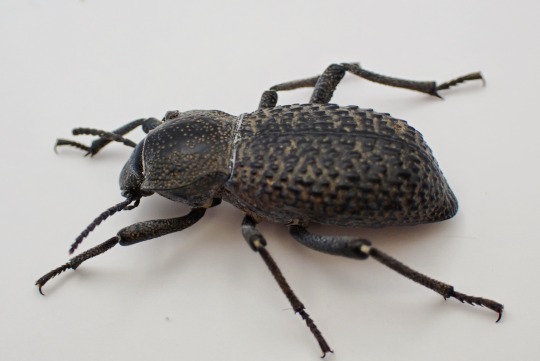
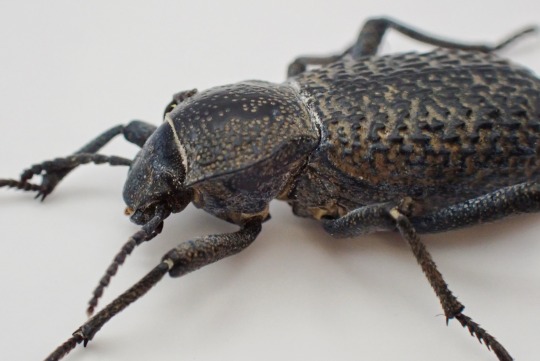
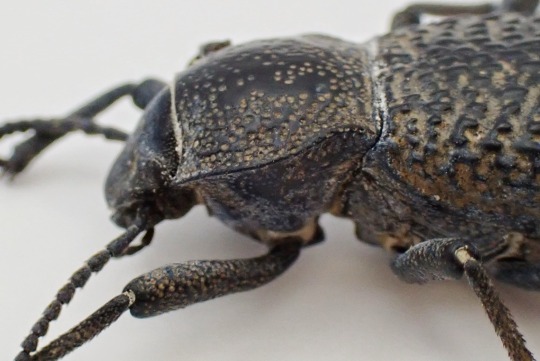
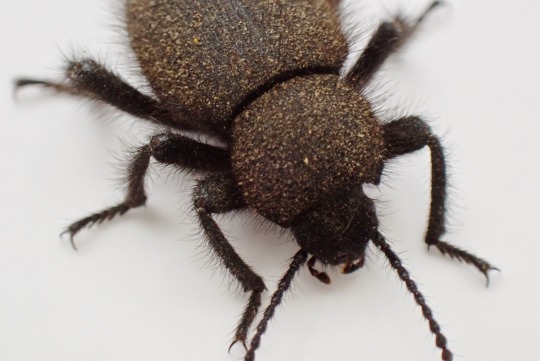



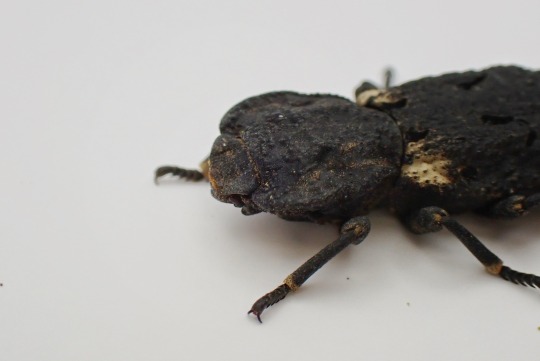
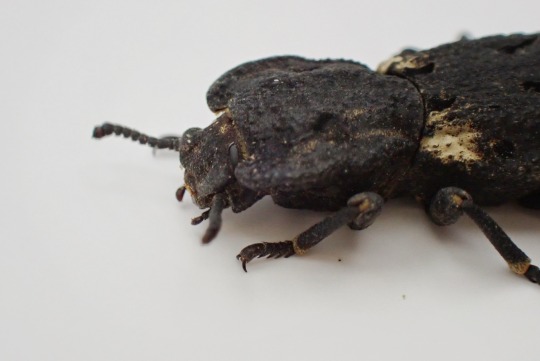

I knew they drew in to protect themselves, but oh my her face is so cute! And even tho they're hard to take pictures of, the wooly darkling beetle is one of my favs.
#invertebrates#invertiblr#inverts#invert#bugblr#beetle#beetles#hellburnt diabolical ironclad beetle#phloeodes diabolicus#black death feigning beetle#cryptoglossa variolosa#wooly darkling beetle#eleodes osculans
90 notes
·
View notes
Text
DIABOLICAL IRONCLAD BEETLE!!!

0 notes
Text
if u want to listen to something that takes into account the actual story of her life, with its own appropriate twists, i cant recommend opera diabolicus's concept album 1614 enough. its only 8 tracks, & theyre all so wonderfully composed. its dark, gothic metal at its finest. and it takes you thru the story of her life, from the beginning, to the discovery of her crimes, to the very end. the last track is called "stone by stone" for pete sake, which is how she was imprisoned!!! the name of the album is the year she died and even the album cover incorporates her imagery. all the lyrics interweave aspects of her life with the horror of her actions, alongside their creative liberties and it all blends into this glorious, hour long epic that i never tire of listening to, even as it peaks into its 11th birthday.
youtube
youtube
i am also very biased and love this video. (+ this song is an absolute BANGER)
#opera diabolicus#they are CRIMINALLY underrated#they have 2 albums but i think this one is much tighter#thematically especially#if you're a big gothic metal/doom metal fan#hints of symphonic metal#cannot rec them enough#Youtube
0 notes
Text
Uncharismatic Fact of the Day
The diabolical ironclad beetle's name is no joke! The exoskeleton of this species is made of tightly interlocked and impact-absorbing structures that allow it to withstand up to pressure of up to 39,000 times its own body weight!

(Image: A diabolical ironclad beetle (Phloeodes diabolicus) by David Kisailous)
If you like what I do, consider leaving a tip or buying me a kofi!
#diabolical ironclad beetle#Coleoptera#Zopheridae#ironclad beetles#beetles#insects#arthropods#uncharismatic facts
153 notes
·
View notes
Text
THE BADASS BUG BRACKET
ROUND 2, BRACKET 6


Wheel Bug (arilus cristatus) vs Diabolical Ironclad Beetle (Phloedes diabolicus)
Wheel Bug propaganda: (none given)
Diabolical Ironclad Beetle propaganda: Can be run over by a car and be OK. somehow perfected the art of perfect armor. California's hate him. Nuff said
#the badass bug bracket#bugblr#insectblr#bugs#insects#bug#insect#entomology#Beetle#Wheel bug#poll tournament#bracket tournament
95 notes
·
View notes
Text

"You Sexy Devil" (0001)
(The Diabolicus Series)
#demon#devil#demon king#ai man#ai generated#ai art community#ai artwork#gay ai art#gay art#homoerotic#homo art#male physique#male form#male figure#male art#bodybuilder#fallen angel#ai gay#fantasy art#gay fantasy art#ram horns#hades#hell#anti hero#fashion illustration#abdominals#supernatural being#sexy hunk
35 notes
·
View notes
Text

[https://www.inaturalist.org/observations/34373751] Satanic/Diabolical Nightjar || Eurostopodus diabolicus Observed in Indonesia Vulnerable in location of observation
#wretched fucking monster#nightjar#birds#nature#wildlife#photography#air beast#who cooks for queue? who cooks for queue all?#all of them next question
56 notes
·
View notes
Text












csrverse bug au rambles below
Batter- Executioner wasp (Polistes carnifex)
Ghost- Warrior wasp (Synoeca septentrionalis)
Bad- Bald-faced hornet (Dolichovespula maculata)
Borbo- Atala butterfly (Eumaeus atala)
Huaso- Mole cricket (Gryllotalpidae)
Flo- Florida dark scrub firefly (Lucidota luteicollis)
Par- Eastern pondhawk dragonfly (Erythemis simplicicollis)
Reinzei- Diabolical ironclad beetle (Phloeodes diabolicus)
Carbine- Prickly stick insect (Acanthoxyla prasina)
Mida- Himalayan giant honey bee (Apis laboriosa)
Lepi- Rice paper butterfly (Idea leuconoe)
Mors- Deaths head hawkmoth (Acherontia atropos)
(Black batter- Red-tailed bumblebee (Bombus lapidarus)
White batter- White-tailed bumblebee (Bombus lucorum)
Boxxedman- Thai boxer mantis (Acromantis gestri)
Daisy- Orchid mantis (Hymenopus coronatus)
Ballman- Eighty-eight butterfly (Diaethria anna)
Magenta ninja- Pink toe tarantula (Avicularia avicularia)
ive got a list of reasons for why these guys are who they are, i'll prob share it later once its better ٩(๑❛ᴗ❛๑)۶
the designs are all subject to change, these were just getting the idea on paper
#off game#bxe#bx execute#csr#continue stop rise#csrverse#bug#bug au#tw bug#ref#im not tagging everyone here#insects#tw insects#this is mostly bxe ill make a seperate post for the remaining csr guysss#:3#scotcharts
45 notes
·
View notes
Text
Oh geeze, in that article about extranormal schools I completely forgot AbSci University! How could I forget? It’s a college, but it counts.
Abnormal Science University: or AbSci U, is located in Connecticut, and it’s a premiere institution for those in the extranormal community. Despite what one might think, they don’t have a large department for traditional magic and often focus on the esoteric sciences. Noncompliant math, nonstandard chronology, holistic ontology, anomalous anatomy and esoteric surgery, etc. They’re one of the only other organizations in the world that are in custody of a true “upper case” artificial intelligence - two in fact, Eschatron and Red Sonya.
Now, some would say they have a reputation for being “mad scientists.” They definitely are not mad scientists. Eccentric, to be sure, but complete professionals. Just because they have names like Professor Diabolicus, Professor Stitcher, and Doctor Warlock doesn’t mean they’re mad scientists. We’ve only had to have several talks with them over the last decade, and most of those were not regarding world-ending cataclysmic possibilities.
If anyone in ASU’s faculty structures is reading this, please reconsider shutting down Eschatron. We’d all rest easier if he was offline. You probably won’t, but it’s worth a shot.
59 notes
·
View notes
Text


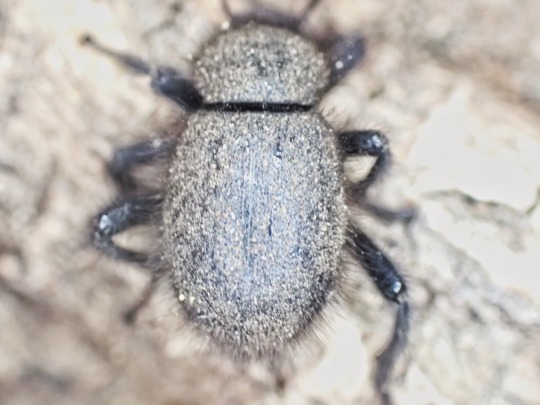
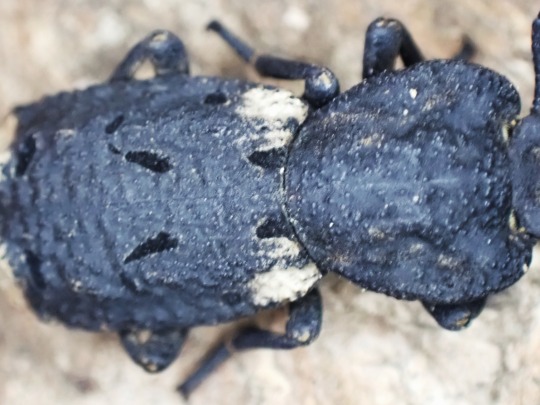
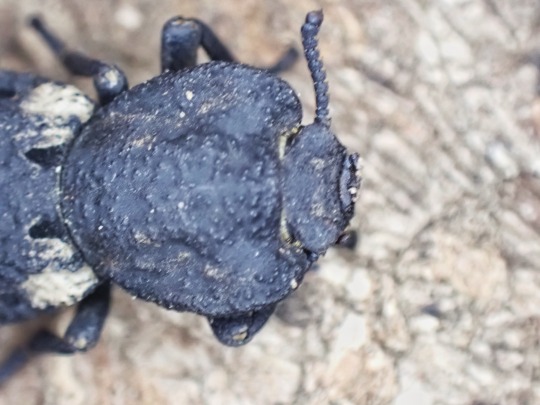
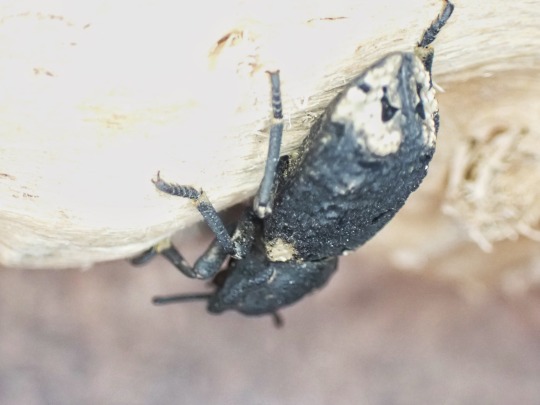
Beetle appreciation post, love their textures.
#invertebrates#invertiblr#inverts#invert#bugblr#beetle#beetles#hellburnt diabolical ironclad beetle#phloeodes diabolicus#wooly darkling beetle#eleodes osculans
87 notes
·
View notes
Text
You are cordially invited to a bug funeral. 😔

We lost Brisket Beetle this morning. He was a diabolical ironclad beetle (P. diabolicus), hellburnt color morph. I gave him his name bc he really did look extra crispy.
He liked being held, or tolerated it very well. He was rarely startled. Even when he was, he relaxed quickly. He seemed content to slowly explore my hands or whatever surface I offered.
His roommates, Bonbon, Karen and Andre, survive him. He got along with them very well. When Karen bullied him over food, he maintained boundaries, but never held resentment.
He really appreciated the decor in the enclosure, climbing on surfaces I didn't think he could reach. He esp liked crawling thru the windows of the old Evil Dead cabin hide. I often saw him take long, quiet walks alone.
Bc he will be missed, his remains will be prepared for display. He's a very, very durable species, and I'm looking forward to memorializing him.
Thank you, Brisket. You were the best beetle ever.
#bug funeral#tw pet loss#tw bug death#i know he was a bug#he was also a great little guy#rip brisket#no idea what the cause was but everyone else seems fine#he was lethargic for a couple days and then gone#captive life expectancy is 8 yrs but no clue how old he was so he mightve been an old man#facts of life i guess
7 notes
·
View notes
Text

"Is Arestes e S'urtzu Pretistu" Sorgono, Sardinia
Is Arestes and S’Urtzu Pretistu of Sorgono
Man has always paid his attention to the events that Mother Nature decreed and decrees with cyclical rhythms that can be defined as eternal, and to which he has tied his fears but also his hopes making it a religion towards a god to whom he turned: Dionisio Mainoles, (Maimone in Sardinia) divinity of vegetation and ecstasy, to whom abundant rains were asked so that the earth would bear its fruits. The name of Maimone in Sardinia has remained linked to springs and watercourses. This God, source of life for men and beasts, was highly venerated by shepherds and farmers. In Sorgono and in other inhabited centers when the calends of January arrived, ritual manifestations were held in his honor, representing the most salient moments of his death.
The rite is very ancient, certainly pre-Christian.
The ritual representation took place on the calends of January: men dressed in skins, loaded with animal bones, with their faces blackened by burnt cork or covered with a black mask, capture and sacrifice the predestined victim, who is generally presented in the form of a goat, bull, deer, wild boar, all hypostases or manifestations of Dionysus who manifested himself in these aspects. Whatever the most remote origin of this manifestation, it is certain that in the writings of Saint Augustine (4th century AD) there is certain testimony to the existence of wild and animalistic masks: "What sensible person could believe that there are sane individuals who disguise themselves as deer, changing their clothes for those of beasts? Some wear sheep and goat skins, others put animal heads on their heads, happy and exultant, if they manage to transform themselves into bestial forms so much so that they no longer seem men" and then: "they dress in bestial clothes similar to goats and deer to make themselves in the image of God, and having made themselves similar they make a diabolical sacrifice". Around the 4th century, therefore, there existed feral or animal masks, a tenacious continuation of evident pagan manifestations. Masquerading in the guise of animals appeared to the Fathers of the Church and the representatives of the Christian cult as a sacrilege. In fact, the Council of Auxerre (585 AD) issued a provision that prohibited these ritual manifestations: non licet kalendis ianuarii vetola aut cervolo facere vel strenas diabolicus. Despite the work of evangelization by the ecclesiastical orders, ritual ceremonies were repeated over the centuries, even though many people, despite having converted to Christianity, disguised themselves in animal forms when the calends of January arrived, re-proposing the ancient propitiatory rituals even though they were aware that this ceremony came from a pagan religion.
Even in the 18th century, according to the testimonies of the Jesuit friar Bonaventura Demontis Licheri of Neoneli and the Jesuit father Giovanni Vassallo, these ancestral rites were still celebrated. In many towns in central Sardinia, propitiatory rituals with human sacrifices were practiced on the calends of January. This fact is not surprising if one considers the centuries-old isolation and the resistance of the populations of the internal areas of Sardinia to change their beliefs, as well as the agro-pastoral economy linked to the agricultural years and the spectre of drought. In his writings "Attobios a Santu Mauru d'Ennarzu" (poem in the Sardinian language) on the occasion of the celebrations in honor of San Mauro Abate in Sorgono (Santu Mauru de i Dolos) on January 15, 1767, he describes in a surprisingly clear way the representation and dynamics of the pagan ritual and of those who participate in it. The sanctuary of San Mauro, a few kilometers from Sorgono, stands at the foot of Monte Lisai in a valley rich in evidence of the Neolithic and Nuragic periods; a short distance away is the sacred complex of Bidu 'e Concas with its 200 menhirs (3000 BC) and a place of worship for the populations in the pre-Nuragic and Nuragic periods.
Licheri calls the masks “Sos Arestes” the rustic, the wild ones.
Sos Arestes, they wear a goat, sheep and cow skin, on their backs they carry animal bones, their head is covered by a cork headdress called su casiddu, completely lined with woolly skin and surmounted by goat, fallow deer, red deer and bull horns, with their faces and arms blackened by soot produced by the burnt cork. They are armed with mighty sticks, wooden clubs and pitchforks, they move with a haughty attitude, causing with little jumps the apotropaic sound of the bones tied to their shoulders, some of them are equipped with an ox horn, which they play for the entire duration of the ceremony.
They advance in a group in an apparently disorderly manner, miming clashes evoking fights or dances typical of the courtship of goats or animals present, in reality these are ancient propitiatory rites to solicit the beneficial rain. The elderly Shepherds claimed that when the goats clashed, the weather was about to change and turn to rain.
At the head of the procession one or two Arestes hold the victim destined for sacrifice tied with a chain: S'Urtzu, a man wearing an entire sheep, goat or bull skin, with the headdress surmounted by majestic bull horns but who unlike the Arestes, has no bones on his shoulders and will be beaten and prodded by all the Arestes of the group.
The ritual of sacrifice culminates with the killing of S'Urtzu, struck to death by the sticks, pitchforks and wooden clubs of the Arestes.
At the signal of the pack leader, the Arestes perform thirteen jumps around the victim, now defenseless, the number of lunar phases in a year, punctuated by the sound of the ox horn; at the new signal of the pack leader, who in the meantime holds the victim tied to the center of the circle, they remove their particular headdress, highlighting their face blackened by the soot of the burnt cork.
Under pressure from the church, the rite performed by adults has been progressively reduced to a banal masquerade whose true meaning had been lost.
In Sorgono, the last testimonies of men dressing up in animal skins and with the entire head of a bull date back to the years 1925-30.
Some old people today still remember and tell of men dressed in sheepskin who chained a man dressed in cowhide with the entire head of a bull on their head who tried to wriggle and resist.
A repetition, a continuation devoid of meaning. It is done because it is known. In the repetition of the ancient rites of the early 1900s, the deep, internal, original and truly significant reason is now missing. A tradition is maintained, a way of acting is preserved, but the way of being, the true essence has now transformed. The Church, the innovations, the changing isolation of these areas, the arrival of external elements, often even to Sardinia, in the administration, in the control of the territory, in the management of religious matters, the arrival of a more widespread culture with a slow but inexorable increase in schooling, produce a physiological and normal abandonment of what was linked to antiquity, to myth and legend. The cultural transition from rite to myth is also marked by the carnivalization (in a playful and ludic sense) of a rite. This transition occurs only when the rite has lost all contact and all meaning with the social life of the community that expresses it. Only when many of those who are part of the same community no longer recognize what was a founding segment of the common identity, and only then, that segment "falls" or "expires" at a playful level and then disappears completely.
5 notes
·
View notes
Text
I wanna talk about one of my favorite birds.
This is the satanic nightjar, more tactfully named the diabolical nightjar.

As you can see he's absolutely scheming, plotting, conniving, even.
They're called this because their plip-plop drop like call has also been likened to the sound of it pulling out a person's eye.
However, the most recent recordings of their calls don't include a sound like this.
Justice for my fool e. diabolicus.
6 notes
·
View notes


